Looking to embark on an outdoor adventure? Choosing the right tent is an essential part of planning a successful camping trip. With so many different types of tents available, it’s important to understand your options and find the one that suits your needs. In this comprehensive guide, we will explore the various types of tents and help you determine which one is right for you.
Whether you’re a seasoned backpacker or a first-time camper, this article will provide you with the information you need to make an informed decision. We will delve into the pros and cons of different tent styles, including dome tents, tunnel tents, cabin tents, and more. You’ll learn about factors such as size, weight, and setup time, as well as considerations for different weather conditions.
From lightweight backpacking tents for solo adventurers to spacious family tents for car camping, we’ll cover it all. So, if you’re ready to find your perfect shelter in the wilderness, keep reading to discover the ultimate guide to different types of tents.
Factors to Consider When Choosing a Tent
Before we dive into the different types of tents, it’s important to consider a few factors that will help you narrow down your options. First and foremost, you need to determine how many people will be using the tent. Are you camping alone or with a group? This will dictate the size and capacity of the tent you should look for.
Next, think about the weather conditions you are likely to encounter. Are you planning to camp in hot and humid environments, or will you be facing cold and snowy conditions? Different tents are designed for different weather conditions, so it’s important to choose one that offers the appropriate protection.
Another factor to consider is the weight of the tent. If you’re planning on backpacking or hiking to your camping spot, a lightweight tent is essential. On the other hand, if you’re car camping and don’t have to worry about weight, you can opt for a more spacious and comfortable tent.
Finally, consider the setup time and ease of use. Some tents are quick and easy to set up, while others require more time and effort. If you’re a beginner or prefer a hassle-free experience, look for a tent that is easy to assemble.
Now that we’ve covered the important factors to consider, let’s dive into the different types of tents and their features and advantages.
Dome Tents
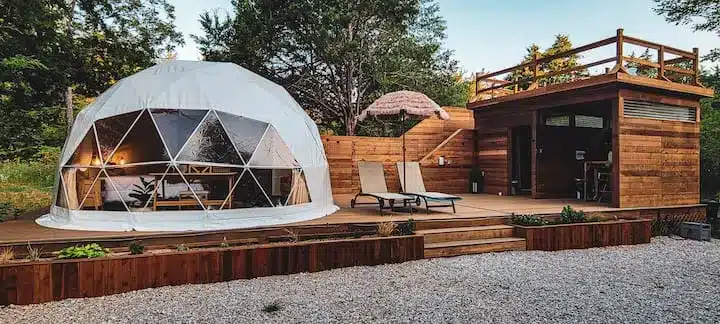
- Description: Characterized by their curved pole structure, creating a dome shape. They offer good resistance to wind and weather. Dome tents are popular for their balance of interior space, stability, and ease of setup.
- Best For: Backpacking, camping, festivals.
Tunnel Tents
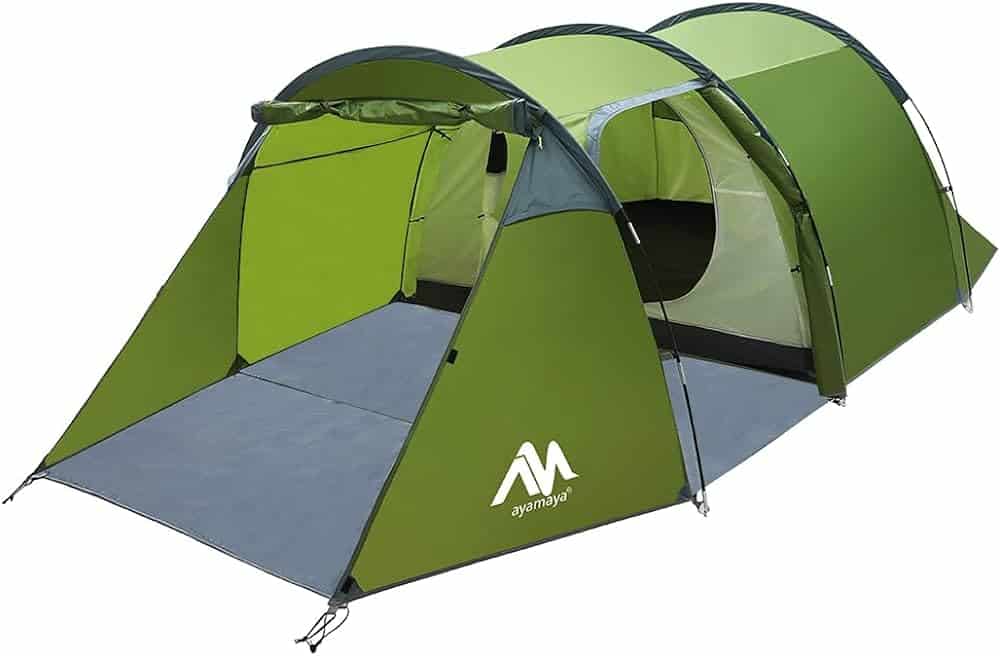
- Description: Feature a series of parallel hoops that create a tunnel-like shape. These tents offer excellent space-to-weight ratios and are generally more spacious than dome tents.
- Best For: Family camping, bike touring, where space and comfort are priorities.
Geodesic and Semi-Geodesic Tents
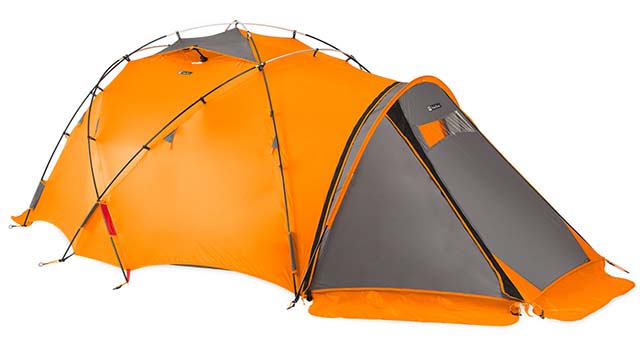
- Description: Utilize an interlocking pole system for enhanced stability, making them suitable for harsh weather conditions, including heavy snow and strong winds.
- Best For: Mountaineering, expedition camping, extreme environments.
Pop-Up Tents
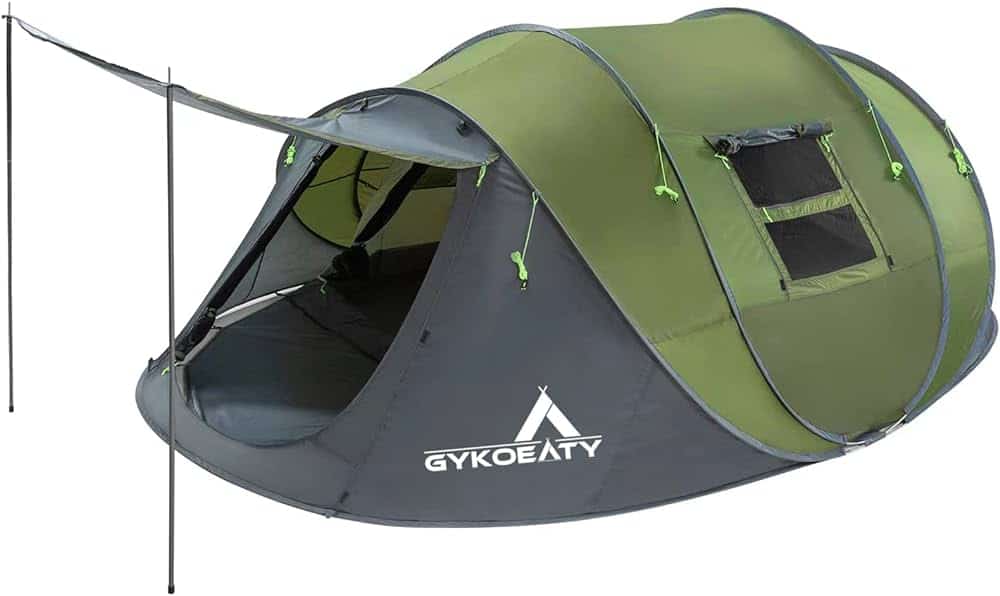
- Description: Designed for quick and easy setup, these tents literally pop into shape when unpacked. However, they may not offer the best stability in adverse weather.
- Best For: Festivals, quick overnight trips, children’s play tents.
Cabin Tents
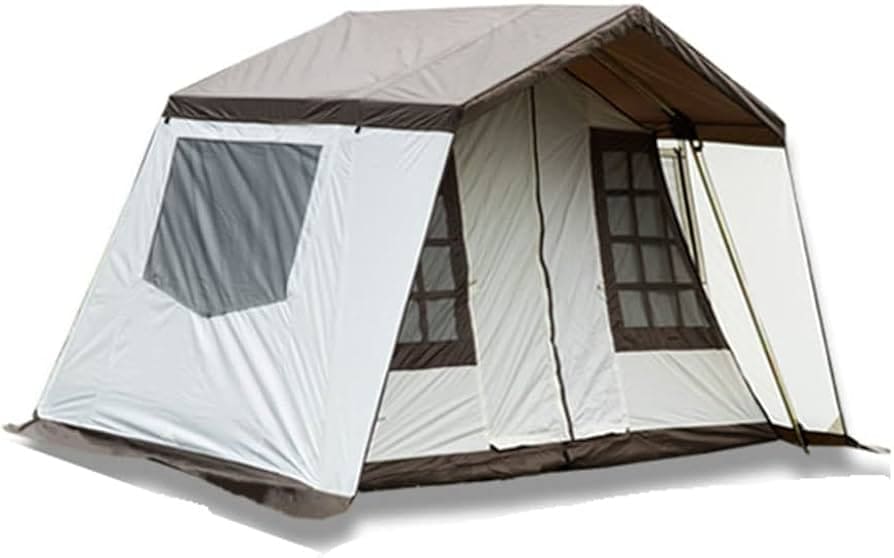
- Description: Stand tall with nearly vertical walls, maximizing interior space and height. They often feature room dividers and large windows.
- Best For: Family camping, extended camping trips, glamping.
Backpacking Tents
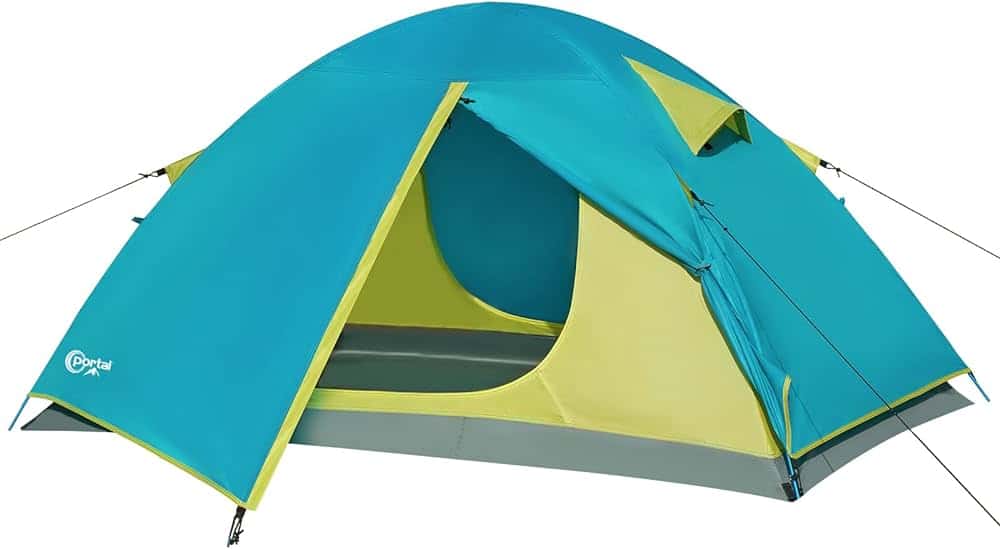
- Description: Lightweight and compact, designed to be carried in a backpack. They prioritize weight savings and are often smaller in size.
- Best For: Backpacking, thru-hiking, bikepacking.
Rooftop Tents

- Description: Mount on the roof of a vehicle, providing a sleeping area off the ground. They are convenient for road trips and offer a quick setup.
- Best For: Overlanding, road trips, adventure travel.
Bell Tents
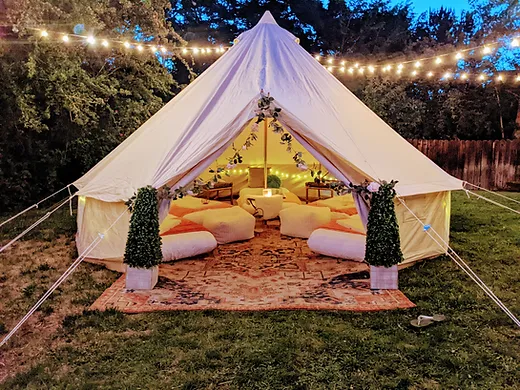
- Description: Circular base and a central pole, creating a bell shape. Made of canvas, they are durable and offer a spacious interior.
- Best For: Glamping, festival camping, large group gatherings.
Teepee (Tipi) Tents
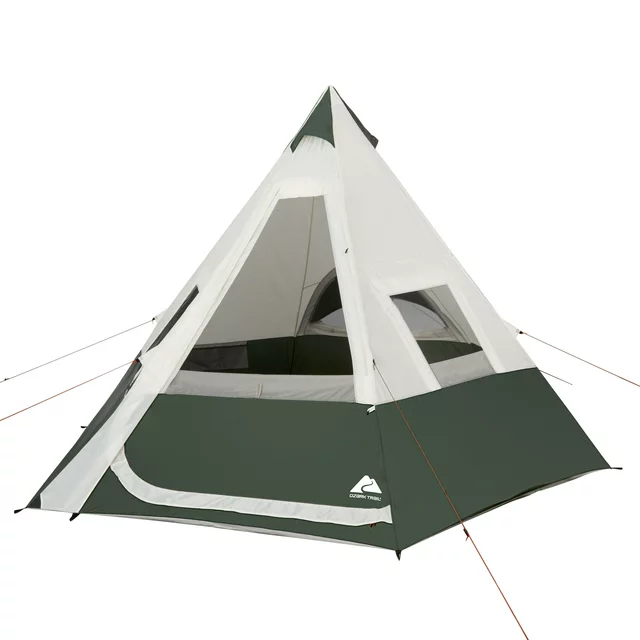
- Description: Conical shape, historically used by nomadic tribes. Modern versions are designed for outdoor recreation, offering a unique aesthetic and central ventilation.
- Best For: Cultural festivals, camping with a twist, backyard fun.
Bivy Sacks (Bivouac)

- Description: Minimalist, single-person shelters that are essentially a waterproof layer for your sleeping bag. They are ultra-lightweight and compact.
- Best For: Solo expeditions, mountaineering, minimalist backpacking.
Hammock Tents
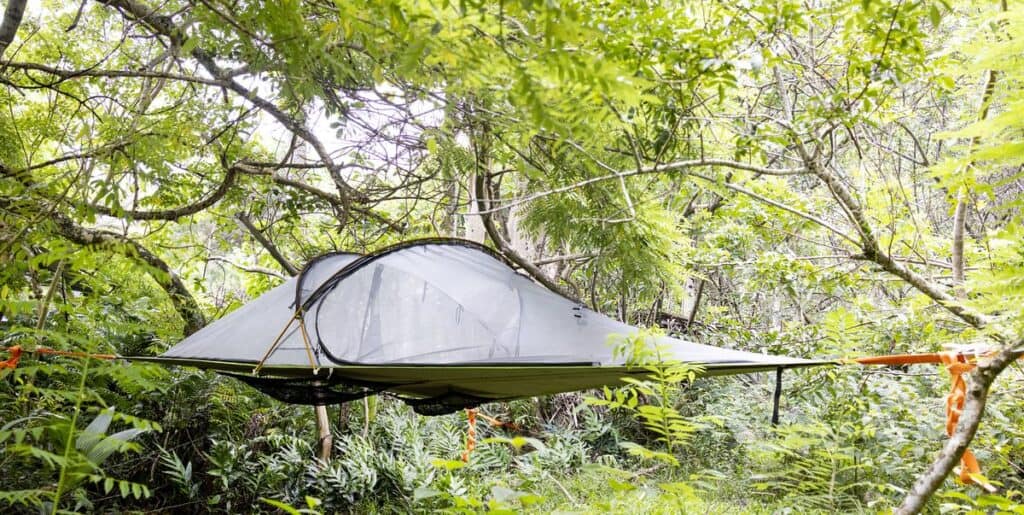
- Description: Suspended between two points, these tents combine the comfort of a hammock with the protection of a tent. They often include a mosquito net and rainfly.
- Best For: Jungle trekking, lightweight backpacking, camping where ground conditions are poor.
Inflatable Tents
- Description: Use air beams instead of traditional poles for structure. They can be quickly inflated, offering an easy setup without the need for heavy or cumbersome poles.
- Best For: Family camping, group outings, anyone seeking easy setup.
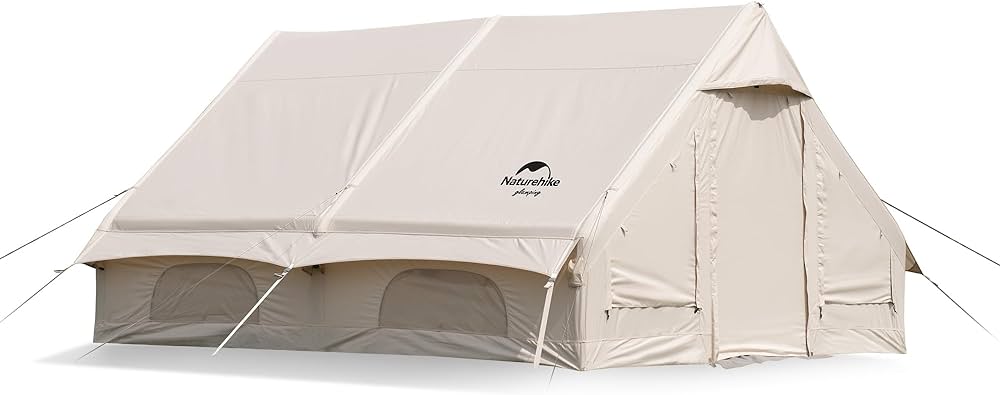
Multi-Room Tents
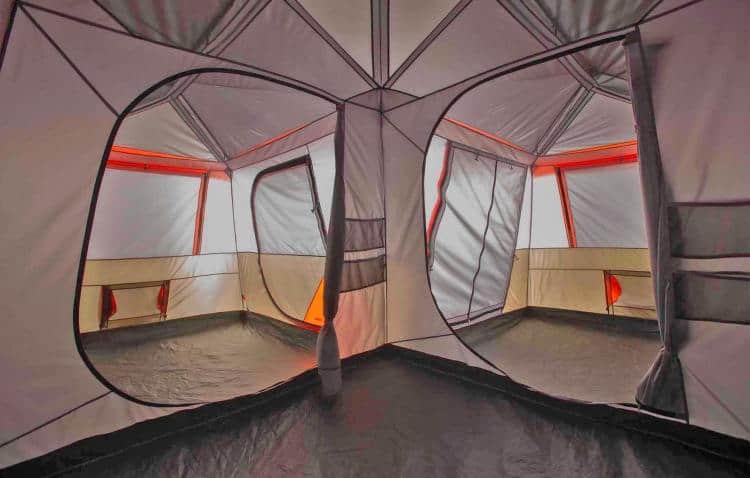
- Description: Large tents divided into multiple rooms for privacy, often resembling a mobile home. They provide ample space for families or groups.
- Best For: Family camping, group trips, extended stays in one location.
Dome Tents: Features and Advantages
Dome tents are one of the most popular types of tents, known for their sturdy construction and easy setup. They are characterized by their dome-shaped design, with two or more poles crossing over the top to create a stable structure. Dome tents come in various sizes, from small one-person tents to larger family-sized models.
One of the main advantages of dome tents is their stability. The crossed poles create a strong frame that can withstand windy conditions, making them a great choice for camping in exposed areas. Additionally, dome tents often have a rainfly that provides extra protection against rain and moisture.
Another advantage of dome tents is their spacious interior. The dome shape allows for more headroom and usable space compared to other tent styles. This makes them comfortable for extended periods of time and allows you to move around freely inside the tent.
Dome tents are also relatively lightweight and compact, making them a popular choice for backpackers. They are easy to transport and can be set up quickly, making them ideal for solo adventurers or small groups. However, it’s worth noting that dome tents may not be as spacious as other tent styles, so if you’re looking for maximum comfort and roominess, you may want to consider a different type of tent.
Cabin Tents: Features and Advantages
If you’re looking for a tent that offers maximum comfort and space, cabin tents are a great option. Cabin tents are characterized by their vertical walls, which create a more spacious interior compared to other tent styles. They are often tall enough to allow campers to stand up fully inside the tent, making them ideal for family camping trips or longer stays.
One of the main advantages of cabin tents is their spaciousness. The vertical walls provide more usable space and allow for multiple rooms or dividers, creating separate sleeping or living areas. This is especially beneficial for families or groups who desire privacy or need separate spaces for different activities.
Cabin tents also offer excellent ventilation. They often have large windows and mesh panels that provide airflow and help to reduce condensation inside the tent. This is especially important in hot and humid conditions, as it helps to keep the interior cool and comfortable.
Additionally, cabin tents are generally easy to set up. They often feature a simple pole structure that can be assembled quickly, making them a popular choice for car camping. However, it’s worth noting that cabin tents are typically heavier and bulkier than other tent styles, so they may not be suitable for backpacking or hiking trips.
Backpacking Tents: Features and Advantages
If you’re planning a backpacking or hiking trip, a lightweight and compact tent is essential. Backpacking tents are specifically designed for this purpose, offering a balance between weight, size, and durability. They are typically made from lightweight materials and have a minimalist design to reduce weight and pack size.
One of the main advantages of backpacking tents is their portability. They are designed to be lightweight and compact, making them easy to carry in a backpack. This is especially important for long-distance hikes or trips where weight is a concern.
Backpacking tents also offer quick and easy setup. They often feature a freestanding design, which means they can be set up without the need for stakes or guy lines. This makes them convenient and hassle-free, especially after a long day of hiking.
Despite their lightweight design, backpacking tents still provide adequate protection from the elements. They are typically made from durable materials that are waterproof and resistant to tearing. Additionally, they often have a rainfly that provides extra protection against rain and moisture.
However, it’s important to note that backpacking tents are generally smaller and more compact than other tent styles. They have limited headroom and interior space, so they may not be suitable for taller individuals or those who prefer more room to move around.
Pop-up Tents: Features and Advantages
If you’re looking for a tent that can be set up in a matter of seconds, a pop-up tent is the way to go. These tents are designed to be incredibly easy and quick to set up, making them ideal for beginners or those who prefer a hassle-free camping experience.
Pop-up tents feature a spring-loaded frame that allows them to automatically pop open when released from their storage bag. This eliminates the need for manual assembly and makes setting up camp a breeze. Simply unfold the tent, secure it with stakes, and you’re ready to go.
In addition to their easy setup
